Govindram Seksaria Science College

MATHEMATICS
DEPARTMENT OF MATHEMATICS
Vision
“An aware and empowered youth who use the power of knowledge to combat ignorance, poverty, social inequality and suffering in our Nation for improved quality of life”
Mission
“Making available quality education to the people of this region and empowering the individual with knowledge”
Objectives
- The department aims to enhance the skills of the students in the basic areas of Mathematics: Algebra, Analysis and Topology/Geometry.
- Appreciate the usefulness, power and beauty of Mathematics.
- Understand and be able to use the language, symbols and notation of Mathematics.
- Develop the knowledge, skills and attitudes necessary to pursue the further studies in Mathematics.
- Develop a critical appreciation of the use of information and communication technology in Mathematics.
About The Department of Mathematics
- Department of Mathematics was started in 1948. Department of Mathematics was established in the year 1966. The staff who led the foundation was Prof. K.G. Gadkari, Prof. S.V.S. Iyengar, Prof. N.S. Satyanarayan, Prof. W.S. Washikar, Prof. J. Rajendra.
- Prof. S S Hegde, Dr. K S Naik, Mrs Meena Satyanarayan, Prof A P Deshpande, Prof S R Tagare are popular teachers who are retired from services.
- Presently Department is headed by Prof M S Nagasuresh.
- Mathematics is offered as one of the core subjects in various combinations with Physics, Chemistry, Computer Science and Geology.
DEPARTMENT ACTIVITIES
Last year department has conducted ‘Hands on Training Program for UG Mathematics teachers of RCU’ on ‘Scilab & Maxima’. Department conduct the special lectures by eminent resource persons regularly. Department conducts student centric programs like inter-collegiate & inter-class Power Point Presentation Competitions, Model Making Competitions, every year. Also, department arrange to send students for various competitions like MTTS, seminars and research competitions. Department Library has rich collection of Reference books, e-books and Mathematical Models. It has reference books that are received from National Board for Higher Mathematics (NBHM). Department started a ‘Certificate course in Vedic Mathematics’ from the academic year 2021-22. Our Future Plan is to start PG course in Mathematics, Certificate course in Basics of Computers. Department is also planning to start interdisciplinary courses like Mathematical- Biology, Geo-Mathematics, Mathematical Finance.
 |  |
RELIVANCE OF MATHEMATICS IN DAILY LIFE
- Mathematics is essential in the natural sciences, engineering, medicine, finances, computer sciences and the social sciences.
- Although Mathematics is extensively used for modeling phenomena, the fundamental truths of mathematics are independent from any scientific experiment.
- Mathematics provides an effective way of building mental discipline and encourages logical, reasoning and mental rigor. in addition, mathematical knowledge plays a crucial role in understanding the contents of other subjects such as science, social science, and even music and art.
- Mathematics has a remarkable ability to cross cultural boundaries and time periods.as a human activity, the practice of mathematics has a social side, which includes education, careers, recognition, popularization and so on.
IMPORTANCE OF MATHS LABS
- It gives an opportunity to the students to discover the subject through activities and situations which lays down firm foundation for more abstract thinking.
- It provides greater scope for individual participation in the process of learning.
- It allows and encourages the students to think about the problems, discuss and learn the concepts in more effective manner.
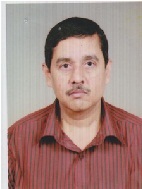 | Prof. Nagasuresh.M.SQualification: M.Sc., SLET |
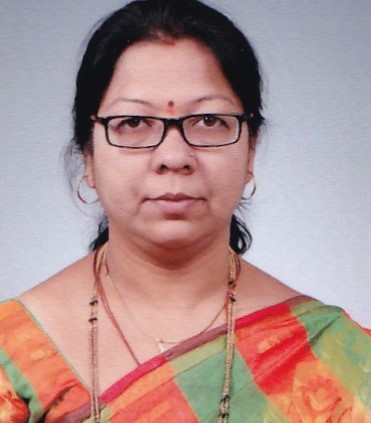 | Prof. Madhumati Y. WaliQualification: M.Sc.,M.Phil.,B.Ed. |
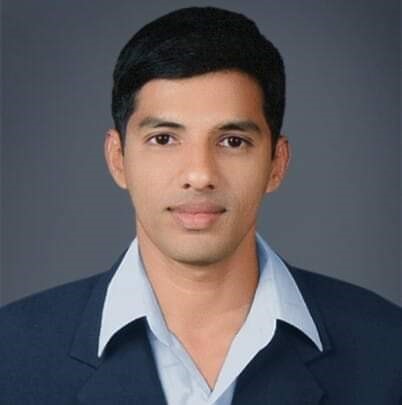 | Dr. Shankar NaikQualification: M.Sc. Ph. D |
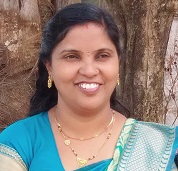 | Prof. Rameshwari D.GodboleQualification: M.Sc.,B.Ed. |
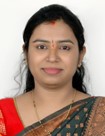 | Dr. Ashwini HiremathQualification:M.Sc. Ph. D |
RESEARCH
Dr. SHANKAR NAIK
Publications in International Journals
- Multigrid method for the solution of EHL line contact with bio-based oils as lubricants in “Applied Mathematics and Nonlinear sciences” 1(2) (2016) 359-368.
- Multigrid method for the solution of EHL point contact with bio-based oil as lubricants for smooth and rough asperity. Industrial lubrication and tribology Vol. 70 No. 4, pp. 599-611. https://doi.org/10.1108/ILT-12-2016-0314
- Multigrid method for the solution of EHL line contact problem with Grease as lubricant. Mathematical Models in Engineering, Vol. 3, Issue 2, 2017, p. 126-134. https://doi.org/10.21595/mme.2017.19498
- 4. An Isothermal Elastohydrodynamic lubrication of elliptical contact with Multigrid method. Australian Journal of Mechanical Engineering https://doi.org/10.1080/14484846.2018.1531810
DR. ASHWINI HIREMATH
Publications in International Journals/ Proceedings
- Reddy, G. J., Hiremath, A. and Kumar, M., “Computational modeling of unsteady third-grade fluid flow over a vertical cylinder: A study of heat transfer visualization”, Results in Physics, 8, pp. 671-682, 2018 (SCI Journal, Scopus) (Impact Factor: 4.476).
- Reddy, G. J., Hiremath, A. and Basha, H., Narayanan, N. S. V., “Transient flow and heat transfer characteristics of non-Newtonian supercritical third-grade fluid (CO2) past a vertical cylinder”, International Journal of Chemical Reactor Engineering, 16(8), pp. 1542-6580, 2018 (SCI Journal, Scopus) (Impact Factor:1.51).
- Hiremath, A., Reddy, G. J., “Transient Analysis of Third-Grade Fluid Flow Past a Vertical Cylinder Embedded in a Porous Medium”, Numerical Heat Transfer and Fluid Flow, Lecture Notes in Mechanical Engineering, pp. 83-91, 2019 (Scopus).
- Hiremath, A., Reddy, G. J. and and Bég, O. A., “Transient analysis of third-grade viscoelastic nanofluid flow external to a heated cylinder with buoyancy effects”, Arabian Journal for Science and Engineering, 44, pp. 7875–7893, 2019 (SCI Journal, Scopus) (Impact Factor: 2.334).
- Hiremath, A., Basha, H., Kethireddy, B., Reddy, G. J. and Narayanan, N. S. V., “The effect of thermal expansion coefficient for unsteady non-Newtonian supercritical Casson fluid flow past a vertical cylinder”, Pramana – Journal of Physics, 93(2), pp. 20, 2019 (SCI Journal, Scopus) (Impact Factor: 2.219).
- Hiremath, A., Reddy, G. J. and and Bég, O. A., “Computational unsteady flow analysis for third‐grade fluid from an isothermal vertical cylinder through a Darcian porous medium”, Heat Transfer, 48 (7), pp. 2752-2772, 2019 (Scopus).
- Hiremath, A., Reddy, G. J., Kumar, M. and Bég, O. A., “Unsteady free convective heat transfer in third-grade fluid flow from an isothermal vertical plate: A thermodynamic analysis”, International Journal of Modern Physics B, 33 (08), pp. 1950060, 2019 (SCI Journal, Scopus) (Impact Factor: 1.219).
- Reddy, G. J., Hiremath, A., Kumar, M., Bég, O. A. and Ali, K., “Unsteady magnetohydrodynamic couple stress fluid flow from a shrinking porous sheet: Variational iteration method study”, Heat Transfer, 51(1), 2022 (Scopus).
- Hiremath, A., Reddy, G. J., Bég, O. A., and Holla, H., “Numerical investigation on transient third-grade magnetized nanofluid flow and radiative convection heat transfer from a stationary/moving cylinder: nanomaterial and nanoparticle shape effects”, Waves in Random and Complex Media, 2022 (SCI Journal, Scopus) (Impact Factor: 4.853).
- Hiremath, A., Reddy, G. J., and Basha, H., “Magnetized Supercritical Third-Grade Nanofluid Flow from a Vertical Cylinder Using Crank-Nicolson Implicit Scheme”, Waves in Random and Complex Media, (Under Review).
Papers presented in Conferences:
- Ashwini Hiremath, “Transient third grade fluid flow past a vertical cylinder”, National Conference on “Applied Nonlinear Dynamics (NCAND-2016)” Jointly Organized by National Institute of Technology, Warangal, Department of Mathematics and Indian Institute of Geomagnetism, Navi Mumbai, December 21-22, 2016.
- Ashwini Hiremath, “Heatline visualization for a third-grade fluid flow past an isothermal vertical cylinder”, 62nd Congress of Indian Society of Theoretical and Applied Mechanics (ISTAM-2017) Conference, Jointly Organized by Departments of Mathematics, Mechanical and Civil Engineering, University College of Engineering, Osmania University, Hyderabad, on December 15-18, 2017.
- Ashwini Hiremath, “Transient analysis of third-grade fluid flow past a vertical cylinder embedded in a porous medium”, International Conference on “Numerical Heat Transfer & Fluid Flow (NHTFF-2018)” Organized by Department of Mathematics, National Institute of Technology, Warangal, on January 19-21, 2018.
COURSE COMBINATION AS PER NEP
MATHEMATICS SYLLABUS
MATHEMATICS SYLLABUS AS PER SEP (AUTONOMOUS)
CERTIFICATE COURSE LIST
VEDIC MATHEMATICS
Syllabus
Unit I : Introduction to Vedic Mathematics and Bharati Krishna Tirtha Swamiji, basic terms: Bases, Sub-bases, Purak, Rekhank, Viniculum Numer, Beejank, Vedic check of addition/ subtraction/ multiplication/ division and addition , subtraction of viniculum no.
Unit II: Multiplication by Nikhilam Method-I, Nikhilam Method- II, Ekadhikena Purvena, Yavadunam Tavadunikritya, Vargmach yojayet, Antyayor Dashakepi, Eknyunena Purvena with examples.
Unit III : Duplex Numers Sqaring of numbers : Ekadhika, Yavadunam, Anurupyena, duplex method, Cubing by Nikhilam and Anurupyena methods with examples square
STUDENT PROJECT LIST
DEPARTMENT ACTIVITIES
| Sl. No | Activity | Link |
|---|---|---|
| 1. | Department Activities Report 2022-23 | Click Here |
| 2. | Department Activities Report 2020-21 | Click Here |
| 3. | Department Activities Report 2019-20 | Click Here |
| 4. | Department Activities Report 2018-19 | Click Here |
| 5. | Department Activities Report 2017-18 | Click Here |
| 6. | Department Activities Report 2015-16 | Click Here |